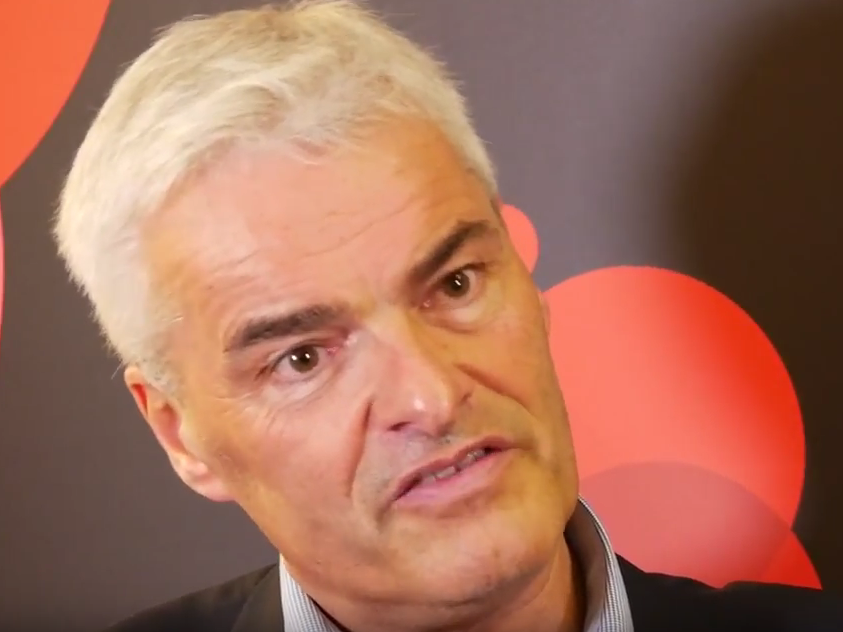How and why Shell recalibrated its leadership development
- 6 Min Read
Shell has chosen four principals of leadership development to build its leaders around.
- Author: Owain Thomas
- Date published: Apr 4, 2016
- Categories

Royal Dutch Shell is simplifying its leadership progression strategy to make the process easier to understand and help develop key skills.
The four step approach focuses not only on the individual leader, but also on growing their employees and in the case of senior leaders, how to build a team around them.
Royal Dutch Shell executive VP of HR for downstream & Europe operations Gerard Penning told HRD Connect how the multinational energy giant had arrived at the four elements it uses: authenticity, collaboration, growth and performance.
“When it comes to the definition of leadership, we found out that if you keep it simple, that if you use a language people that can engage with and understand, it makes the messaging more powerful,” he said.
“We come from an environment where we first tried to be very explicit about all the different components but we had too many details.
“For me these leadership attributes really are about finding a language where each individual leader makes it their own and then people start to understand and it becomes credible,” he added.
Sink or swim
Historically Shell had promoted people and at some stage they failed.
In 2000 it reviewed this and introduced a strategy which involved nine points, symbolised by the then nine planets, which were a range of practical aims for leaders to aspire to. However, that proved complex, difficult to remember, and crucially, disconnected from the business.
“If I’m brutally honest, where and how was that applied to my day to day work and what I have to work on as a leader? Where did that give me something that would translate into something practical at work? And I have to say I’m not so sure about that,” Penning told the HR Directors Business Summit.
“We found out that if you don’t connect this to your ecosystem, it’s not going to become relevant, it’s not going to work.”
So the new, cleaner, simpler, more business orientated strategy was developed.
Speaking exclusively to HRD Connect after addressing the Summit, Penning explained how the four elements could be put into practice.
Authenticity
Penning noted that people were looking for leaders they could connect to, that they held themselves to the same standards as everyone else and that it was not an excuse to become authentically angry, but to engage and involve a diverse population and range of ideas.
“What we learned was when it comes to diversity and inclusion, its relatively easy, particularly if you have a strong brand, to hire diverse people. But if that diversity is not embraced, if the different skill and different capability is not used to get the better business outcomes, you don’t have the positive effect of the diversity. And that’s where the inclusion comes in,” he said.
“So what we try to do around inclusion and inclusive leadership is teach, help, support and coach leaders to listen first and foremost more intently to their people and include literally in the decision making process diverse thoughts and ideas to get the better outcomes.
“It sounds simple but its rather hard to do and that’s why we make a point out of it.”
Growth
Shell, like most organisations, has typically dealt with growth in a numerical way, focusing on financial figures and performance.
Penning argues this does not excite and energise employees, but instead the new strategy aims to do this.
“Describe growth in a language that answers for people the question ‘what’s in it for me? Why should I be excited?’” he said.
“Talk about career opportunities that the growth creates. If you have an expansion strategy of growth it would open up the opportunity for people to work outside their home country. If it’s about size growth it would allow the opportunity for people to deal with bigger challenges.
“I think at that moment in time people start to get excited and you do what leaders should do and get people’s hearts and minds to connect, you will get the better performance for the enterprise.”
Watch the video interview with Shell’s Gerard Penning:
Performance
A vital part of leadership duties is managing and measuring performance – typically done with green or red lights on key performance indicator dashboards.
While it is common to query why the red lights remain uncompleted, Penning suggested that it was more worthwhile ensuring the those tasks given the green light were actually thoroughly completed – to challenge the green.
“Don’t challenge the reds, because that’s basically openly talking about those areas where you’re lagging behind. But challenge the greens because there might be gems there, things you can learn, there might be undesired side effects that you can explore,” he said.
Collaboration
Typically, collaboration within the corporate world is seen as teamwork – working together to reach a common goal and achieving a set task. While that is important, being a leader requires a greater depth of involvement.
It means bringing together people who may come from very different environments whether work or personal – connecting the engineer with the marketer with the administrator.
“My point is that the most difficult part of collaboration is building bridges with people who are different than you and it builds a bit back on the topic of listening because that’s the core skill that you use when you want to collaborate with someone who has a different driver, speaks a different language, comes from a different culture than you are,” Penning said.
“We found that in today’s world with companies expanding into other countries where you try to build bridges and with other cultures, but also inside a business where you want to have a digitised strategy you have to build bridges with people who are good at that.
“So my point around collaboration is be curious about leaders capability and proven capability to be successful with people who have very different drivers than themselves.”
The whole package
Finally, Penning explained to HRD Connect that finding all these skills in one person was very rare, with most leaders being stronger in some areas and weaker in others.
So, it becomes vital to build the right team around them.
“In a practical environment when it comes to building teams it is important to compensate for the strengths and weaknesses of the leader.
“So if a leader is very strong in performance management but weaker in collaboration, you want to build that capability in the team around that leader and that way in the practical world you can create what we call winning teams and use your leader attributes to help build that,” he concluded.
Download and listen to the full Gerard Penning interview:









